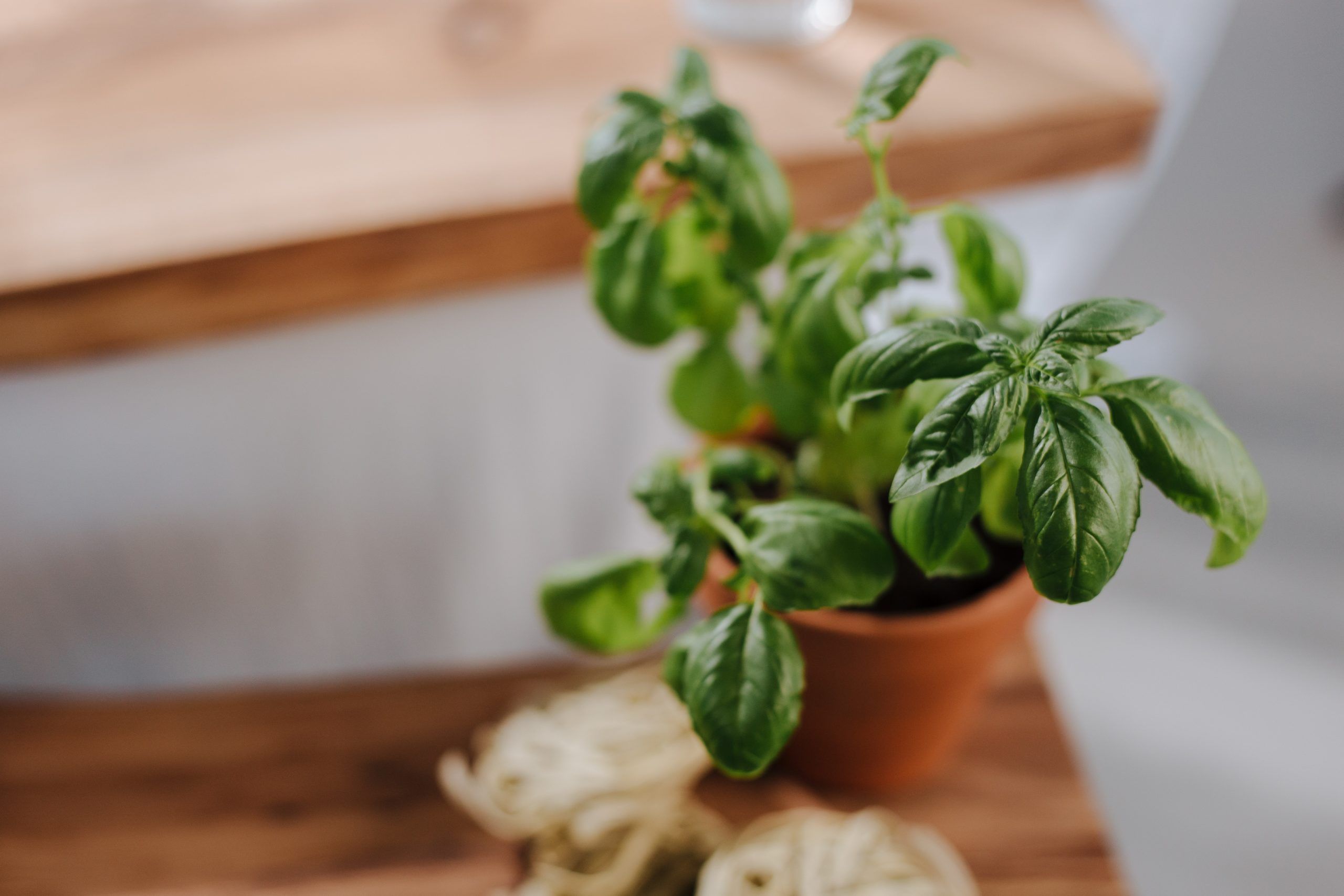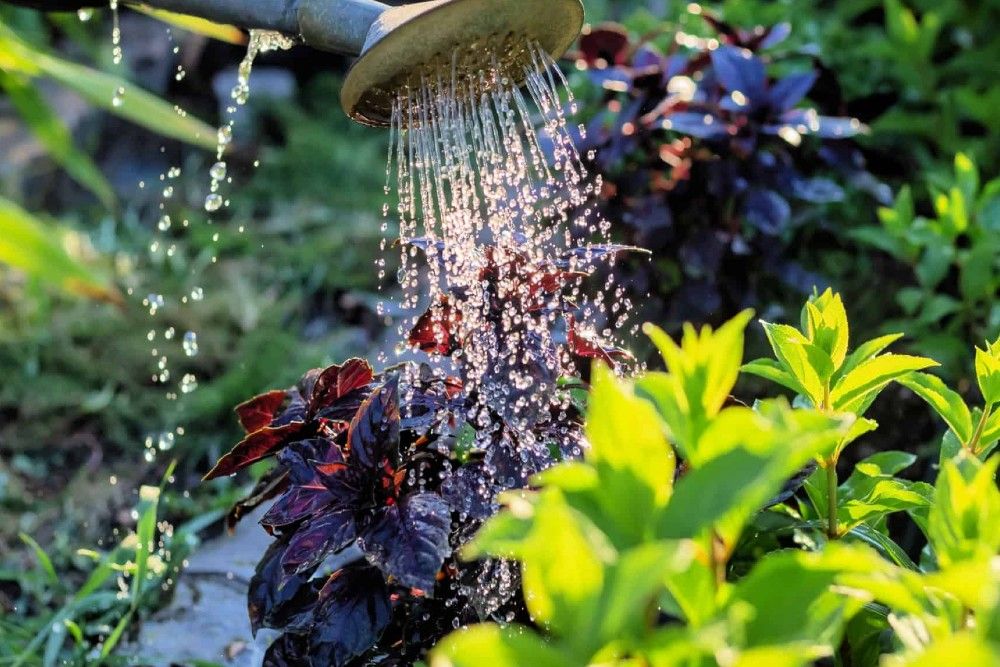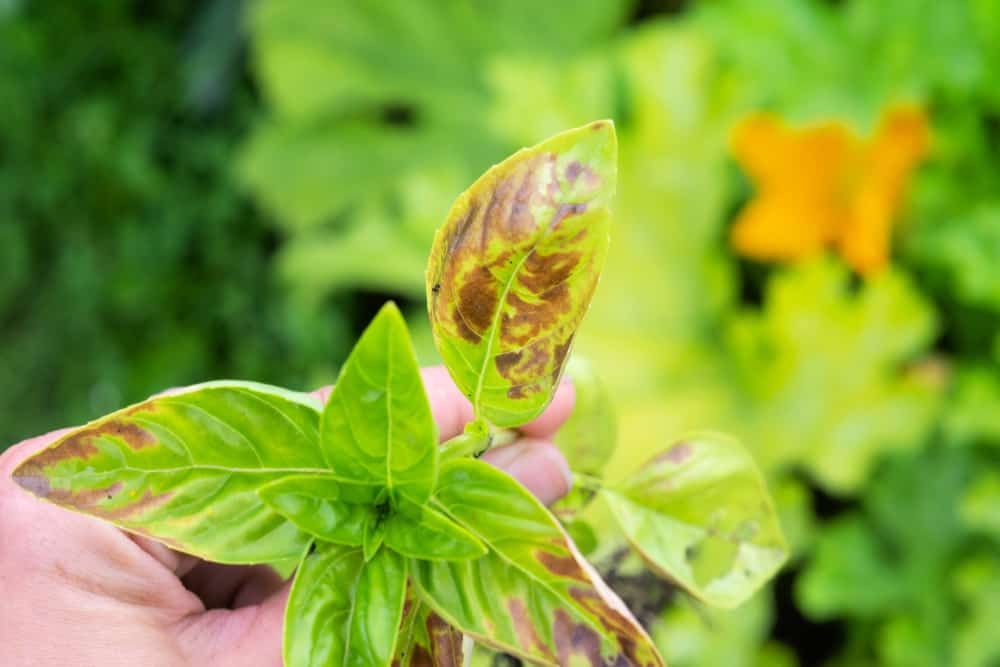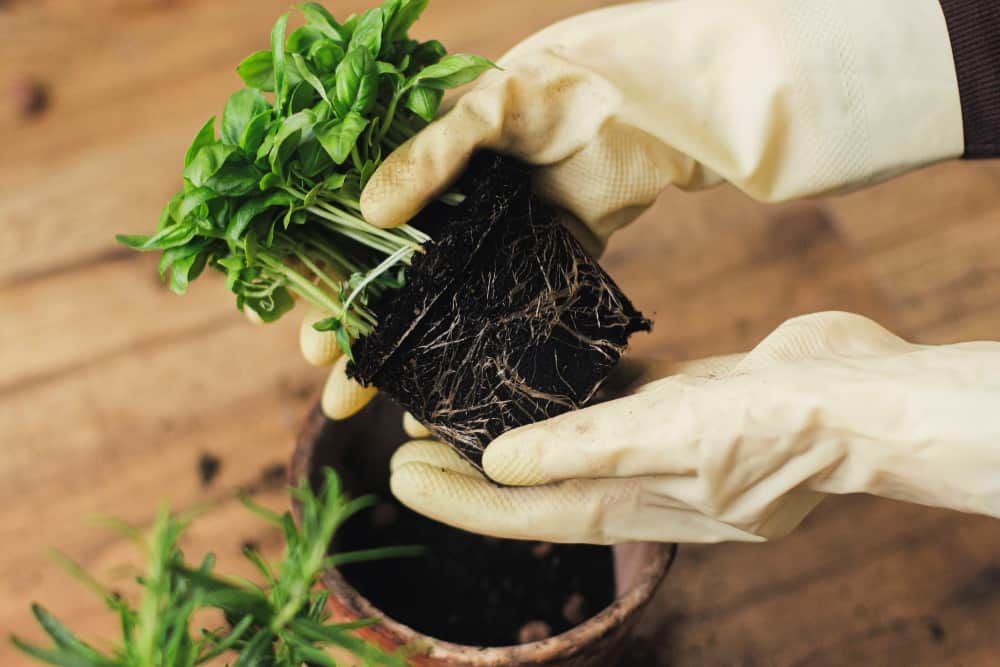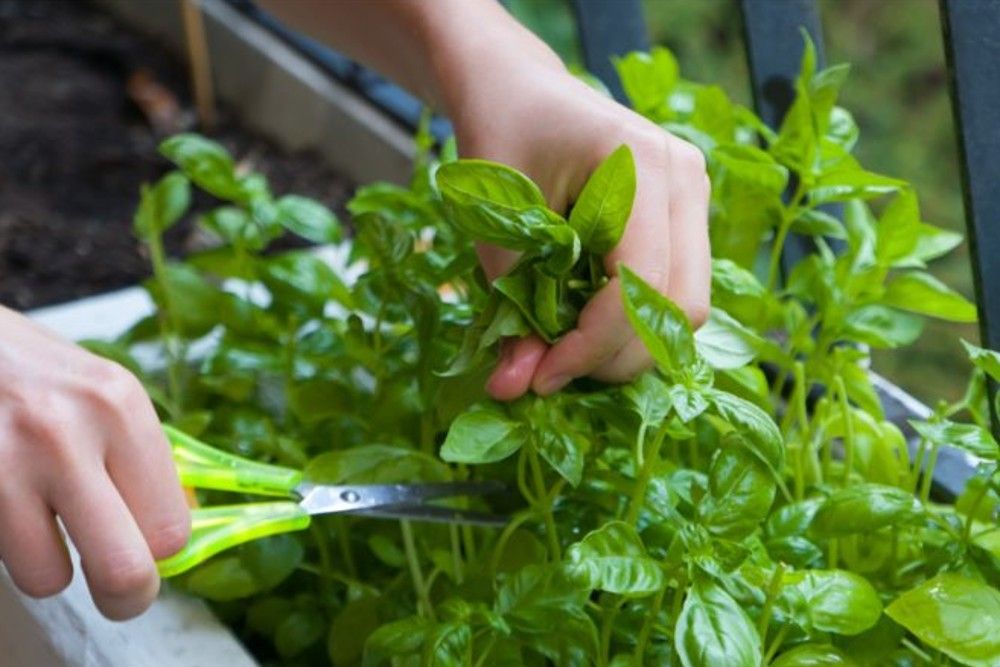Basil is a fragrant herb that adds flavor and depth to your meals. With its subtle aroma and somewhat sweet taste, it's easy to see why this herb is a staple in many kitchens and gardens.
Basil thrives in heat and lots of sunlight -- it simply loves the long, warm summer days. But what should you do when your basil plant starts to wilt and droop right before your eyes?
There are a few different reasons why your basil plant begins to wilt. Learn about common problems that lead to a wilting basil plant and what to do about it.
Improper Watering
Image credits: MALAKHOVSKIY via Shutterstock
One of the main reasons basil plants wilt is improper watering. Too much or too little water can cause severe stress to your plant. Basil likes heat and about six to eight hours of sunlight; Sustaining itself through these conditions requires moist, well-draining soil.
Soil that is too dry will result in leaves that droop -- but don't stress if you notice this happening. You can water your basil right away to correct it and stick to a regular watering schedule in the future. Similarly, if the soil is overly wet, your plant will not be happy either. Soggy, overly-moist soil may lead to issues like root rot and disease.
To stop irregular watering, use a moisture meter to test the moisture level in your soil frequently. This guarantees that you never under or overwater the plant. To check, the soil should be slightly moist to the touch but not excessively wet. The best time of day to water is in the early morning, before the afternoon heat sets in.
Water basil thoroughly about once a week. However, pay attention to the weather and periods of intense heat. During this time, your basil plant may need even more water. If you are growing basil in a pot, water it until it drains from the bottom of the container.
To retain moisture in the soil, apply mulch around your basil plants. Mulching around the plant ensures that water doesn't evaporate out of the soil too quickly, reducing how often you need water. For the best results, apply a layer of mulch about 3 inches thick. Popular mulch choices include fallen leaves, bark, wood chips, straw, or pine needles.
If you have underwatered your plant, once you correct it, the plant should perk back up in a few days. For basil that has received too much water, recovery time is between one to two weeks.
Disease
Image credits: Abduramanova Elena via Shutterstock
Basil plants will also wilt due to disease. Common plant diseases that cause this to happen are fusarium wilt and bacterial wilt. Unfortunately, these diseases take over the plant and cause significant damage.
With fusarium wilt, you'll notice leaves that start to droop and then fall off the plant. Another sign of this disease is dark brown marks on the plant stem. If you spot these symptoms on your basil, there's nothing you can do to save it. Toss away the plant and soil, or you may risk spreading the disease to other plants in your garden. Opt for planting basil varieties resistant to this disease, such as 'Nufar,' 'Prospera,' and 'Newton.'
Bacterial wilt is a soil-borne disease that can affect basil plants. With this type of disease, the leaves will remain green, and although they don't drop, they will wilt. Bacterial wilt attacks the root system, and once infected, this disease will remain in the soil for several years afterward.
Like fusarium wilt, soil and plants affected by bacterial wilt need to be discarded immediately. Remove as much of the soil as you can. If your basil was growing in a container, dispose of all the soil and disinfect the container before using it again. In the garden, avoid planting in the affected area until you have put down new garden soil.
Transplant Shock
Image credits: Bogdan Sonjachnyj via Shutterstock
If you recently transplanted your basil and notice the leaves drooping, it's likely because of transplant shock. This is often due to introducing the plant to a new environment too quickly, which causes stress and shock. Changes in temperature, humidity, and sunlight will all affect your basil transplant.
Basil seedlings started indoors, and transplants from your local garden center need to go through the process of hardening off before you can successfully transition them outdoors. This process takes several days; slowly introduce the plant to the outdoor temperature, sunlight, and wind, increasing the time it spends outside each day. If you skip this, plants often go into a state of shock, which may cause them to wilt.
But fret not; you can still save your basil! Start by providing the plant with some protection from the outdoor elements if you can. Move your plant to a spot in the garden with less wind. Choose an area that receives filtered sunlight and provide it with adequate water. After a week or two, the plant should recover and restore itself.
Plant Needs Pruning
Image credits: DarwelShots via Shutterstock
Another reason you might notice basil wilting is that you need to prune your plant. Basil is prolific and grows quite quickly. Therefore, frequent pruning is necessary to keep the plant content. If you leave basil to grow too full and bushy, the plant may wilt from the weight of its leaves and stems.
To prevent this from happening, harvest the leaves regularly using sharp, disinfected pruning shears. Every few weeks should be enough. If your basil is overgrown, don't be afraid to trim back the plant (you can always use it in the kitchen for various dishes!).
Doing this will keep the plant growing healthy and strong while enjoying tons of fresh basil! Once you start pruning your plant, it should return to normal within a couple of weeks.
Stop Basil From Wilting!
If your basil is wilting, don't stress too much about it. It's likely due to improper care or infrequent watering, which you can quickly correct. Assess if your plant appears to have a disease, and if not, follow the basic plant care tips outlined above to keep this herb flourishing in the garden.
Have you experienced a wilting basil plant before? What did you do? Leave a comment down below.

